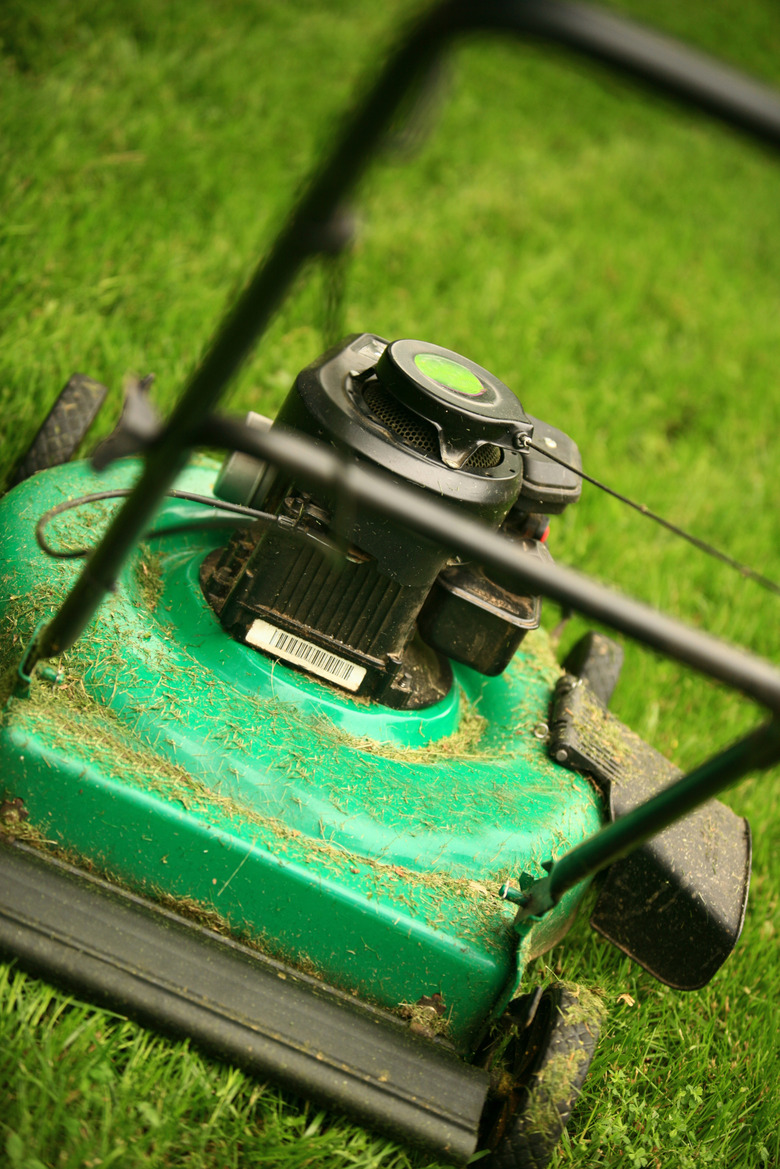What To Do For A Push Mower That Is Overheating
The small engines that power lawn mowers generate heat as a result of internal combustion. If this heat cannot escape from inside or around the engine, the mower overheats, which often causes it to stop dead in its tracks.
The small engines that power lawn mowers generate heat as a result of internal combustion. If this heat cannot escape from inside or around the engine, the mower overheats, which often causes it to stop dead in its tracks. You may be able to restart the mower after allowing it some time to cool, but the better solution is to correct the condition that caused it to overheat.
Cooling Fins and Engine Shroud
Mower engines typically have a plastic shroud covering the motor. They also have cooling fins milled into the engine block near the spark plug. These fins increase the engine's surface area as a means of dissipating internal combustion heat. Should dirt, debris and grass clippings collect under the shroud or between the cooling fins, the engine becomes wrapped in this "blanket," and heat cannot escape. Once the mower has cooled down enough that the engine is safe to touch, clean the engine's exterior surfaces by brushing away the debris.
- The small engines that power lawn mowers generate heat as a result of internal combustion.
- If this heat cannot escape from inside or around the engine, the mower overheats, which often causes it to stop dead in its tracks.
Clogged Air Intake Manifold
Mowers run best when the air and gasoline mixture is set correctly for the type of engine. A clogged air filter, or debris in the air intake manifold — the tube that travels from the air filter to the carburetor — starves the engine of air and makes the mix too rich in gasoline. That makes the engine run inefficiently, and it increases the amount of heat produced. Check the manifold for any obstructions, and clean or replace the air filter.
Check the Oil Level
Incorrect oil levels can also play a role in overheating. Oil lubricates the piston, crankshaft and other internal components. When oil falls below recommended levels, the additional friction caused by moving parts builds inside the engine, and it overheats. But too much oil can also cause overheating. Oil is a thick, or viscous, liquid. Too much oil inside the crankcase causes the engine to work harder, producing more heat than the engine can take. Maintain oil levels within the range recommended for your mower, which is typically inscribed on the dipstick. When topping off or changing oil, add the correct viscosity, and do not use too heavy or too light an oil.
- Mowers run best when the air and gasoline mixture is set correctly for the type of engine.
- Too much oil inside the crankcase causes the engine to work harder, producing more heat than the engine can take.
Push Mower Operation
Push mowers are designed to cut grass while operating at full throttle. Mowing at less than full throttle robs the mower of the power it needs to push through the lawn. In addition, mowing wet grass for long periods of time adds stress to the engine. Either of these operations can cause the mower to overheat. Check the lawn, making sure it's dry enough to mow, and run the mower at its top speed for smooth cutting that does not tax the engine.
Time for a Tune-Up
Over time, a push mower's engine components wear, get dirty or fall out of adjustment. A proper tune-up can restore the engine to conditions similar to when it was new. A new spark plug, adjusted engine timing, a clean and properly adjusted carburetor as well as the correct valve clearances all reduce the chances that the engine will overheat. You can make these adjustments yourself if you're comfortable working on small engines and have the proper engine specifications available. If not, call a service technician who is trained to work on small engines.
- Push mowers are designed to cut grass while operating at full throttle.
- In addition, mowing wet grass for long periods of time adds stress to the engine.
